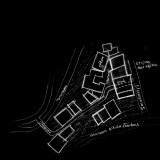Among the dark spots in human history is certainly the attitude of the global community towards the Jewish people, who have experienced various forms of exile. The spatial exclusion of the Jewish world is defined by the creation of the first, historically, ghetto in Venice. From then on, small, isolated communities, hidden in scattered spatial complexes, have long been the backbone of the Jewish diaspora. The present research project deals with the formation of the Jewish ghetto, starting from its foundations and analyzing in depth the instance of Veria.
The constant separation of the Jewish element concerned not only the attitude of the state towards it, but also the perception of the Jewish world towards itself. Accompanied by the sociologist Sennet and the historian Braudel, we will study the distinct philosophy of introversion and the religious faith of the Jewish world, two features that on the one hand differentiated it from the rest of society, on the other hand turned it from a victim to a social subject.
The Jews spread all over the world. Coming to Greece, they moved to both coastal and mountainous towns, creating isolated communities. In this research project, we will explore the Jewish communities while being imaginary guided by Bernard Pierron to his long journey to the Jewish communities of Modern Greece. Emphasis is placed on the study of the Greek Synagogue, center of Judaism and a landmark of the respective communities.
The main focus of the study falls on the case of Veria. The special relationship of the city with the "other", the different, the foreign, is explored as part of its uniqueness. In this context, the course of Judaism over time and its economic, population related and social changes are examined. We are coming to the beginning of the 20th century to meet a small separated Jewish community, which was timidly approaching the rest of the locals. The ghetto of Veria from the beginning was a place of protection of the Jewish element and manifestation of itself, until its mutation by the occupying forces during World War II. Its urban planning is characterized by a defensive attitude towards the city, turning it into an "island of the city". The testimonies of the survivors and the interviews of the eyewitnesses serve as a valuable and guiding tool. As a result, the overall atmosphere of the time is captured and life, coexistence and, finally, the dissolution of the local community is revealed.
